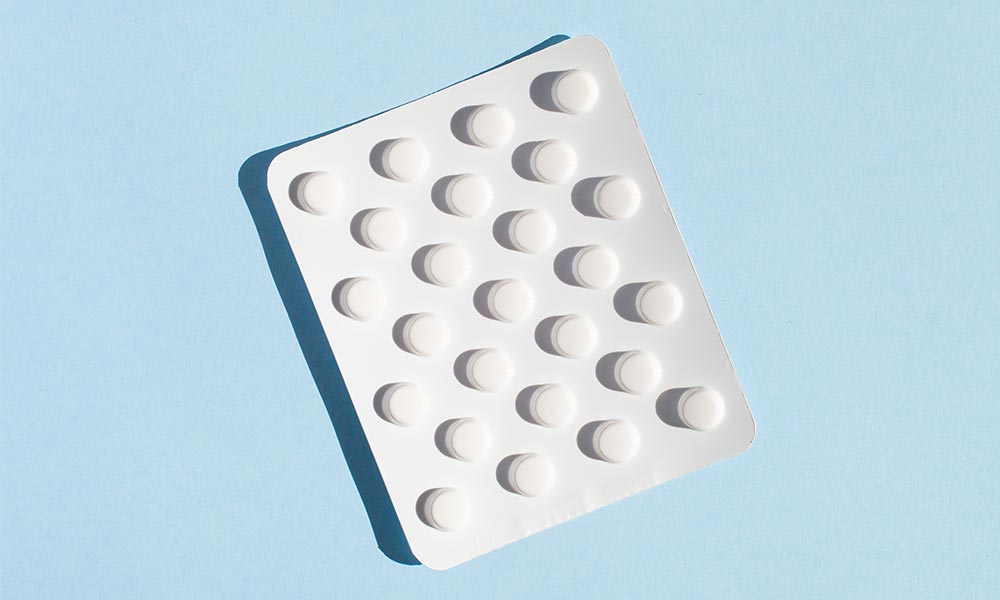Substances | 5 min read
How Long Does Methylphenidate Last? Onset, Duration & Detection
Medically Reviewed By

August 25, 2025
Written By
On August 25, 2025

What you will learn
- Methylphenidate onset occurs in 20 to 60 minutes, immediate-release lasts 3 to 5 hours, and extended-release lasts up to 12 hours.
- Peak blood levels will vary with each formulation, but the half-life is generally between 2 and 4 hours, with detection windows varying depending on the type of testing.
- The primary factors influencing clearance are age, metabolism, liver and kidney function, and any potential drug interactions that may delay or accelerate the process.
Methylphenidate is a Schedule II central nervous system stimulant prescribed for attention deficit hyperactivity disorder, or ADHD, and narcolepsy. It’s available in generic forms as well as under brand names such as Ritalin, Ritalin LA, and Concerta. There are immediate-release and extended-release formulations that differ in onset, duration, and dosing schedules.
Gaining a clear understanding of how long methylphenidate lasts and how it is eliminated from the body can be a significant help to patients, caregivers, and healthcare providers in optimizing treatment, managing side effects, and planning around drug tests. For your safety, it’s essential to understand the typical duration of action by formulation, how drug testing detects methylphenidate, and identify the main factors that influence its effectiveness.
How Long Does Methylphenidate Work? At A Glance
How long methylphenidate lasts depends on a few things, first and foremost being the formulation that’s been prescribed.
Immediate-release formulations, such as Ritalin, typically begin working within 30 minutes, reach their maximum effect in one to two hours, and last for approximately 5 hours. Extended-release formulations, such as Concerta or Ritalin LA (long-acting), utilize more specialized delivery systems that provide symptom relief over periods of up to 12 hours, covering the typical school or workday with a single dose.[1]
Peak blood levels and detection windows will often be specific to the formulations of each brand in relation to the type of test being used. Generally speaking, urine tests can detect methylphenidate for up to 3 days, while saliva tests are also effective for periods of 3 days, and hair follicle tests can detect it for 3 months.[2]
Immediate-Release vs. Extended-Release Formulations
Immediate-Release (IR) Formulations
Immediate-release methylphenidate tablets are typically dosed two to three times daily, providing relatively rapid absorption and a rapid onset of action. Patients typically experience improved focus and reduced impulsivity within 20 to 60 minutes, on average, with the recommended doses.[3]
Average doses are between 5 mg and 20 mg per dose. Users will experience the peak effect approximately 90 minutes after ingestion, with a total effective duration of between 3 and 5 hours, depending on the dose and individual.[4]
The most common side effects with immediate-release formulations are insomnia, appetite suppression, headache, and increased heart rate. All generally manifest early and diminish as the medication clears the system.[5]
Extended-Release (ER/XR) Formulations
Extended-release methylphenidate products offer prolonged symptom control with once-daily dosing. There are several popular types of extended-release formulations.
- Concerta utilizes an osmotically controlled release mechanism to maintain relatively steady blood levels for up to 12 hours, with peak effectiveness achieved between 6 and 8 hours.
- Ritalin LA: This Ritalin formulation utilizes a dual-pulsed release, with half of the dosage being immediate-release and the other half being delayed, providing up to 8 hours of symptom management.
- Other ER formulations: This includes any other branded or generic long-acting capsules that release methylphenidate over a longer period.
Extended-release formulations reduce the need for midday dosing and lower the peaks and troughs in plasma concentration compared to immediate-release formulations. Sharp peaks and troughs can lead to an increased occurrence of side effects, such as jitteriness and rebound irritability.[6]
Ultimately, the determination of the best fit for any particular individual, between IR and ER, depends on daily schedule, school or work demands, history of substance use, and individual response. Healthcare providers consider factors such as a patient’s routine, risk of substance abuse, and co-occurring medical conditions when selecting the right methylphenidate formulation.
How Methylphenidate is Absorbed, Distributed, and Metabolized
Methylphenidate is rapidly absorbed in the gastrointestinal tract, with immediate-release tablets producing peak plasma concentrations within 1 to 2 hours and extended-release tablets or capsules achieving maximum concentrations at around 5 hours.[7] Since methylphenidate has a relatively short half-life, typically less than 4 hours, IR doses are required multiple times each day. In contrast, ER doses are needed at least once, and sometimes twice, per day to maintain consistent levels.
Once absorbed, methylphenidate distributes widely throughout the body’s tissues, crossing the blood-brain barrier to increase the levels of dopamine and norepinephrine. These neurotransmitter elevations form the foundation for the entire capacity for improved attention, reduced impulsivity, and increased wakefulness in the treatment of ADHD and narcolepsy.[8]
Once methylphenidate passes into the bloodstream through the gastrointestinal tract, it eventually reaches the liver, where it is broken down and metabolized. In this process, methylphenidate undergoes de-esterification, resulting in the formation of ritalinic acid, which is then excreted by the kidneys.[9]
Diminished renal or hepatic function could substantially prolong the drug clearance. This can increase efficacy, as well as the potential for side effects, including elevated heart rate and blood pressure. [10] Because while methylphenidate is one of the most popular ADHD medications, it’s also a Schedule II controlled substance regulated by the DEA and FDA, adherence to prescribed dosing and routine monitoring of vital signs is essential to minimize risks and optimize treatment outcomes.
How Long Methylphenidate Stays in the Body
Tests for methylphenidate will detect the compound for varying periods, depending on the sampling method used.
- Urine Tests: Methylphenidate and its metabolites are typically detectable for up to 3 days after a single dose. In frequent users, trace levels may persist slightly longer.[11]
- Saliva Tests: Detection in saliva lasts about 3 days, reflecting recent use and helping healthcare providers monitor adherence.[12]
- Hair Follicle Analysis: Hair follicle tests can detect methylphenidate up to 3 months after the last use.[13]
Factors Affecting Duration and Clearance
- Age and Metabolism: Children and adolescents often metabolize methylphenidate faster, shortening its duration of action. Older adults may experience prolonged effects due to slower metabolic rates.
- Body Weight and Health Status: Lower body weight can increase plasma concentrations and intensify side effects like insomnia or reduced appetite, while higher weight may dilute peak levels.
- Liver and Kidney Function: Reduced hepatic or renal function impairs clearance, extending both therapeutic effects and the risk of adverse effects, including elevated blood pressure or heart rate.
- Concomitant Medications: Co-administration of antidepressants, certain antihypertensives, or other central nervous system stimulants can alter methylphenidate metabolism via enzyme induction or inhibition.
- Formulation and Dose: Immediate-release forms have a short half‐life and require multiple daily doses. Extended‐release formulations provide a longer period of symptom control but may also prolong detectability in drug tests.
- Food and pH Effects: High-fat meals can delay absorption, while gastric pH modifiers may influence dissolution and onset time.
Potential Side Effects and Safety Considerations for Users
Methylphenidate has a long record of being well-tolerated, but anyone taking or potentially being prescribed the drug for their attention deficit hyperactivity disorder should know what side effects are relatively normal and which ones may indicate a medical emergency.
The most common side effects for users are the loss of appetite, insomnia, headache, stomachaches, or nausea.[14] There is a small portion of users who also experience cardiovascular side effects that elevate their blood pressure and heart rate. While this isn’t a medical emergency, it would indicate the need for periodic checks to ensure vitals are good.
Users can develop anxiety or jitteriness, particularly if using an immediate-release form of methylphenidate and the doses aren’t lined up optimally, allowing a drop or spike in plasma levels.[15]
Less frequently, serious reactions like chest pain, shortness of breath, or skin rash require prompt medical attention. Adolescents may experience growth suppression with long‐term use, so consistent height and weight monitoring are recommended.
Get to Know How Long Your Methylphenidate Lasts
Finding the right formulation of methylphenidate for your individual needs, whether an immediate or extended-release form, can feel like a lot. Your healthcare provider and medication team will help assess your ADHD or narcolepsy medication needs. They will create a medication program that aligns as closely as possible with your daily routine. Be sure to monitor for side effects, adhere to your optimal dosing schedule, and communicate openly and honestly with your healthcare provider.
Frequently Asked Questions About The Topic “How Long Does Methylphenidate Last”
Combining methylphenidate with amphetamines, atomoxetine, or antidepressants should only occur under the direct supervision of a healthcare provider as part of a treatment program, to avoid excessive stimulation or drug interactions.
If you miss an immediate-release dose, take it as soon as you remember, provided it is more than four hours until your next dose. For extended-release forms, skip the missed dose and return to your regular schedule. Do not double the dose if you missed a dose.
Refill before your supply runs out by noting your prescription expiration date and discussing with your prescriber at least a week in advance to avoid interruptions, withdrawal symptoms, and rebound symptoms of ADHD.
Ascendant New York Editorial Guidelines
Here at Ascendant New York, we understand the importance of having access to accurate medical information you can trust, especially when you or a loved one is suffering from addiction. Find out more on our policy.
[1][7][8][9][10][14][15]Verghese, C. (2024, October 29). Methylphenidate. StatPearls [Internet]. https://www.ncbi.nlm.nih.gov/books/NBK482451/
[2][11][12][13]T, B. (2023a, October 17). How long does methylphenidate stay in your system?. Verywell Mind. https://www.verywellmind.com/how-long-does-methylphenidate-stay-in-your-system-80285
[3][4][5]Cândido, R. C. F., Menezes de Padua, C. A., Golder, S., & Junqueira, D. R. (2021, January 18). Immediate-release methylphenidate for attention deficit hyperactivity disorder (ADHD) in adults. The Cochrane database of systematic reviews. https://pmc.ncbi.nlm.nih.gov/articles/PMC8092481/
[6]National Institutes of Health. (n.d.). DailyMed – methylphenidate capsule, extended release. U.S. National Library of Medicine. https://dailymed.nlm.nih.gov/dailymed/drugInfo.cfm?setid=1f8983ce-71b8-4c62-830d-e4692ddededa




